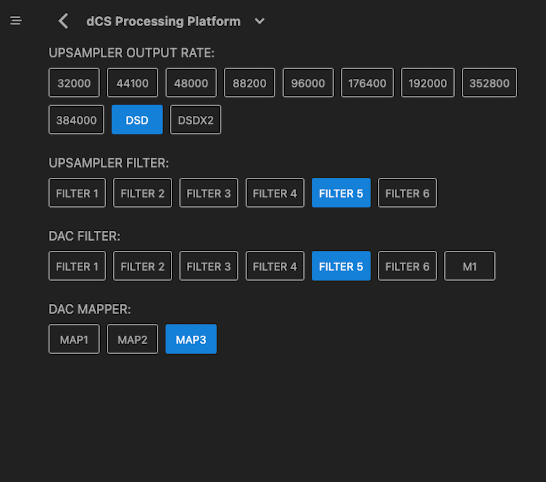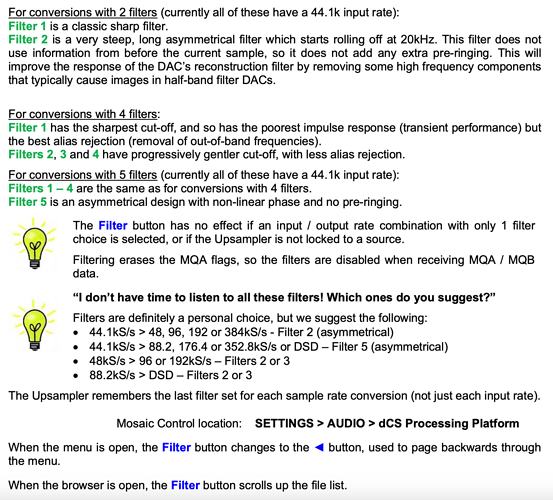Addressing the most recent comments here, filtering is a really tricky topic to talk about in a concise way. It’s quite technical, and becomes very difficult to explain the trade-offs of each filter choice without getting into theory of things like transient response and Nyquist imaging. I have made some posts previously on filtering (see here and here) to explain in more detail than in the manuals exactly what happens with the filters in a dCS DAC or an Upsampler, and what happens when for example you increase the filter length (so move from say PCM filter 4 to filter 1).
Aside from that, if we are discussing what filters would be recommended for a particular user, it is a topic with no right answer - there are simply too many factors at play for us to be able to say “this is the filter you should be using” - listening and using your ear to decide which filter you subjectively prefer is always going to be the best option. None of the filters in a dCS DAC (or the Upsampler for that matter) are ‘wrong’, so you won’t be missing anything major by not having the PCM filter set to anything other than the default F1 across the board, but it can help personalise the sound to your preferences.
In terms of listening to filters, I very rarely find that folks will hear a difference large enough to be able to A/B test filters on the go. It typically takes the form of choosing a filter option, living with it for a while (a few weeks perhaps) and making a change. After the change, do you find yourself listening for longer, with less fatigue? Are you more emotionally engaged with the music? If so, you’re on the right lines, and if not, changing back would be a good idea.
One of the areas we are working on in terms of usability, currently for Varèse, is to simplify audio settings (such as PCM filter choice, Mappers etc.) into two configurations recommended by dCS. These will hopefully either act as starting points to experiment with settings from, or can be where you leave your system.
I should note, and this is often met with a bit of scepticism from users, that the default settings of PCM Filter 1, DSD Filter 1, Mapper 1, DXD Upsampling is a perfectly valid settings configuration and will provide excellent results. There is nothing wrong with this configuration, and there is absolutely no necessity for you to change any of these settings if you are happy with the sound.
If there is anything I can clarify about filtering, I’m more than happy to go through questions here.


